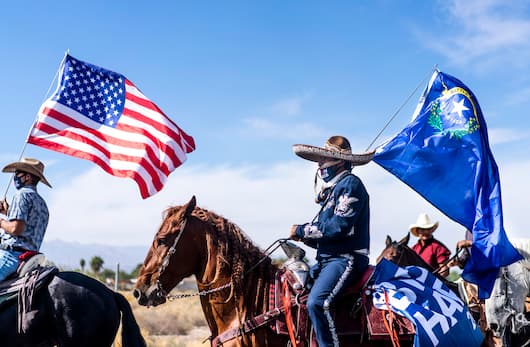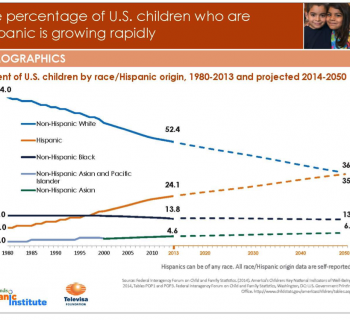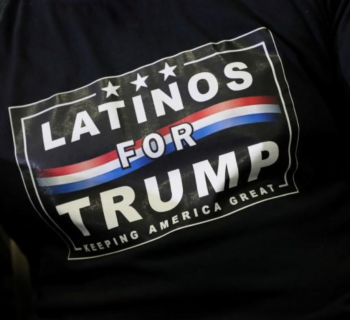By Jose A. Del Real, Washington Post – Dec. 18, 2020
This disjunction is the subject of intense, often confused, debate. Users of “Latinx” are accused of being out of touch with working-class Latino communities and of practicing linguistic imperialism on the Spanish language, which, like French and Italian, is grammatically gendered. And the term’s opponents are often called transphobic, anti-LGBT and “machista” — chauvinist.
The opposition to “Latinx” is often quotidian: The -x is hard to say in Spanish. Its plural derivatives, like “latinxs” and “amigxs” and “tixs,” are impossible to pronounce. For Spanish speakers navigating nonbinary gender in their day-to-day lives, the -x modification does not provide a road map for dealing with pronouns (el/ella) or gendered articles (el/la, un/una) in spoken Spanish. This English-language modification to Spanish-language grammar does not achieve linguistically what it hopes to achieve culturally: an expansive recognition of autonomy and difference that people can use in everyday life.
Spanish has witnessed several innovations to make it more inclusive. A growing number of LGBTQ communities here and abroad use “Latine” (la-tee-neh). Not only does it sound much less awkward in Spanish than “Latinx,” but the -e can be applied to other words in verbal Spanish very easily, in lieu of the masculine -o or the feminine -a. The gender-neutral pronoun “elle” (pronounced: ey-eh) has become a popular modification for “el” (he) and “ella” (she) when the person being identified is nonbinary. None of these has caught on in the United States, even as “Latinx” has become more common in news headlines, official public health communiques, medical discussions, corporate emails and glossy Instagram posts by social influencers.
Meanwhile, domestic American politics have subsumed the debate over “Latinx.” This fall’s election highlighted the nuanced political leanings of 30 million voters of Latin American descent, about 1 in 3 of whom nationally voted to reelect President Trump. Political preferences and calculations within this group vary widely based on where people live, as well as their ancestry, faith, age, gender, education, income and other variables.
Nevertheless, some strategists and journalists argue that progressives’ embrace of “Latinx” lost some votes among Latino communities in Florida and Texas by imposing a label on people who do not use it to describe themselves. (The Congressional Hispanic Caucus and its members appear to rarely use the term in statements to their constituents.) But that explanation ignores more easy-to-prove causes, including the absence of early and sustained investment by Democratic campaigns in the Latino communities of Florida and the Texas borderlands. Democrats, by contrast, fared far better in states like Arizona and Nevada, where grass-roots Mexican American advocateshave built effective political mobilization efforts.
If these constituencies are so different from one another, some have even asked if it is a mistake to use a single label to encompass all people of Latin American descent. The push for a pan-ethnic label began in earnest in the late 1960s and 1970s. From the Northeast to the Southwest, Puerto Rican and Mexican American community leaders recognized shared social problems — including poverty and inadequate investment in their schools — but were often told by federal authorities that they lacked data to substantiate their requests for federal funding. Prominent Latino leaders and academics began to lobby the U.S. Census Bureau to create a category that would include them — and thus measure disparities on a scale of statistical significance. “Hispanic” appeared for the first time on the census in 1980, says G. Cristina Mora, the author of “Making Hispanics: How Activists, Bureaucrats, and Media Constructed a New American.”
“Hispanic” soon had detractors. By the 1990s, a growing consensus among academics and activists held that the term obscured the legacy of colonization and genocide by Spain. “Latino” emerged as a preferred pan-ethnic identifier, and in 2000 it was added to the census alongside “Hispanic.” (The “race” of Hispanics/Latinos is a fraught topic, because the census does not recognize the common Latin American racial category of mestizo, which denotes a mix of European and Indigenous ancestry.)
“Latinx” is the latest twist in this saga. It began to circulate on the Internet around the turn of the century, primarily through chat spaces and early forms of social media, adopted first by queer-identifying people of Latin American descent. Since 2015, young people have embraced it with particular exuberance, especially in university settings.
Where and by whom “Latinx” is used has helped spur the complaints that it may alienate working-class Latino communities (especially those that speak Spanish) or at least fail to reflect their preferences. “I keep thinking, people who are watching this, do they identify with that term?” asks Richard T. Rodríguez, an associate professor at the University of California at Riverside, of political messaging during the pandemic that has used “Latinx.” “The x is jarring, kind of like biting in glass.” (Rodríguez also pointed out that even though “Latinx” is often used in solidarity with the trans community, a transgender person who has fought for his or her gender identity to be publicly recognized can also be marginalized by the term.)
Today, surveys show that people of Latin American ancestry in the United States often prefer to describe themselves by referencing their specific countries of heritage, according to a 2019 Pew survey. For second-generation Americans of Latino descent, country of heritage is used equally often as “Hispanic” or “Latino,” according to the survey. And those nationalities are not gendered in English.
But surveys that ask participants to choose a single identifier miss the extent to which people of Latin American descent often “code switch,” depending on who they are talking to, says Mora. Someone can identify as Mexican American and Latino, Cuban American and Hispanic, Nicaraguan American and Latinx, and any configuration therein. Mora adds that “Latinx” is more common in California than in other parts of the country. “I certainly identify as Chicana, as Latina, and I use ‘Latinx’ often. And that coincides with the data I’ve seen. It’s not mutually exclusive, and we have a right to do that,” she says. “We are one of the most dynamic groups of the country. We are continually contending with ourselves, and that’s absolutely fine.”
And when in doubt about how people identify, she advises, just ask them.
By Jose A. Del Real, Washington Post – Dec. 18, 2020







